Japanese Tea Ceremony
Introduction
Text-to-speech Audio
In addition to the cold-water container pictured here, look for the beautiful tea bowls and elegant tea caddies used to hold loose green matcha tea. A traditional tea ceremony encourages participants to relax and enjoy the peaceful serenity of the occasion...
According to one unverified legend, the history of tea began in China. In 2737 BCE, tea leaves from a nearby tree fell into Emperor Shen Nung’s boiled drinking water. No one knows if that is true, but he is often credited with the discovery of this important beverage. Tea was popular in China long before other countries knew of it. During the Tang dynasty, (618-906 AD) tea became the national drink of China. During the eighth century, Lu Yu wrote an entire book about tea, The Tea Classic, or Ch’a Ching. Soon thereafter, Buddhist monks who had traveled to China introduced tea to the people of Japan. Drinking tea, especially on ceremonial occasions, has become an important part of Japanese culture...
The introduction of a special kind of tea fostered the development of the Japanese tea ceremony. In the 12th century, the Buddhist priest Eisai (1141-1215) brought a special kind of tea from China that is known in Japan as matcha. This tea uses only the green buds from sprouting green tea bushes, which are then dried and ground into a fine powder. Matcha can be served two ways. Koicha is a thick, almost paste-like preparation used in formal tea ceremonies. Usucha is a much lighter, powdered version and is used in most typical tea ceremonies. Matcha tea tastes somewhat bitter, so kaiseki sweets are traditionally served to complement the bitterness...
Click on the picture of the green water carrier to watch the slide show.
Images
This celedon (green glazed) porcelain water bowl is used to bring water to be boiled in a kettle.
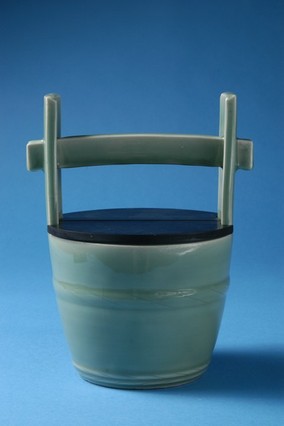
A cast iron kettle and hibachi are used to heat the water for the tea.
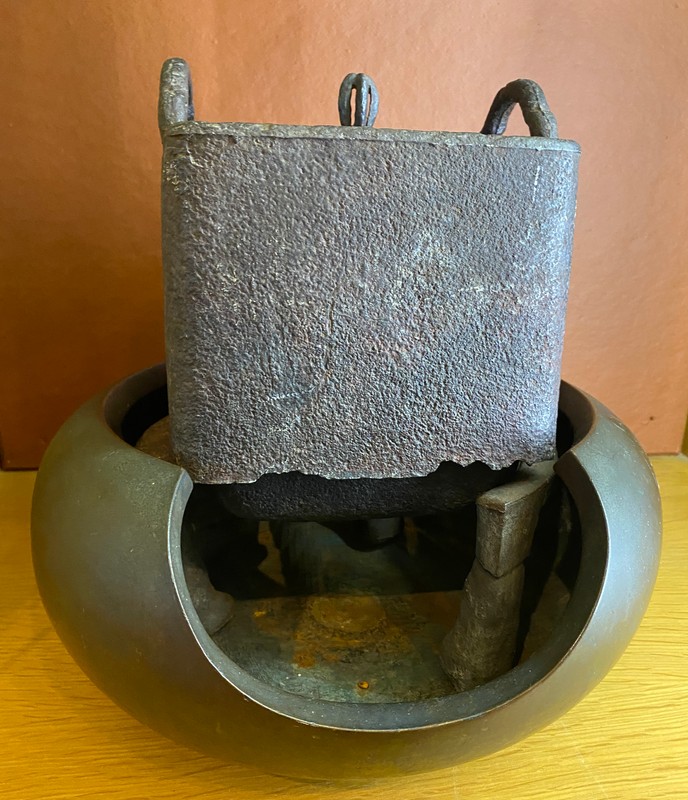
A bamboo ladle for transporting water rests on a cup.
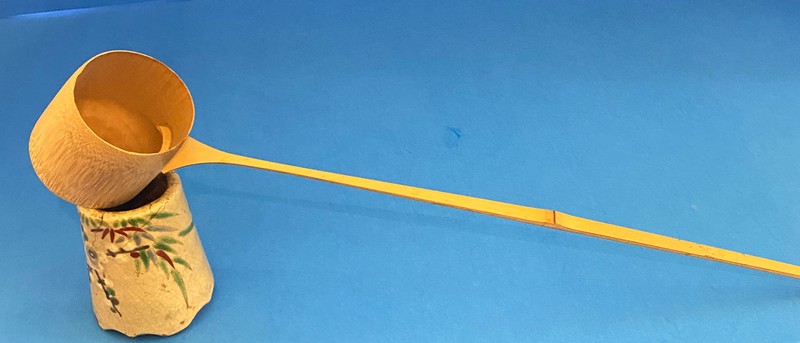
Wastewater is discarded into a special bowl after washing tea implements.
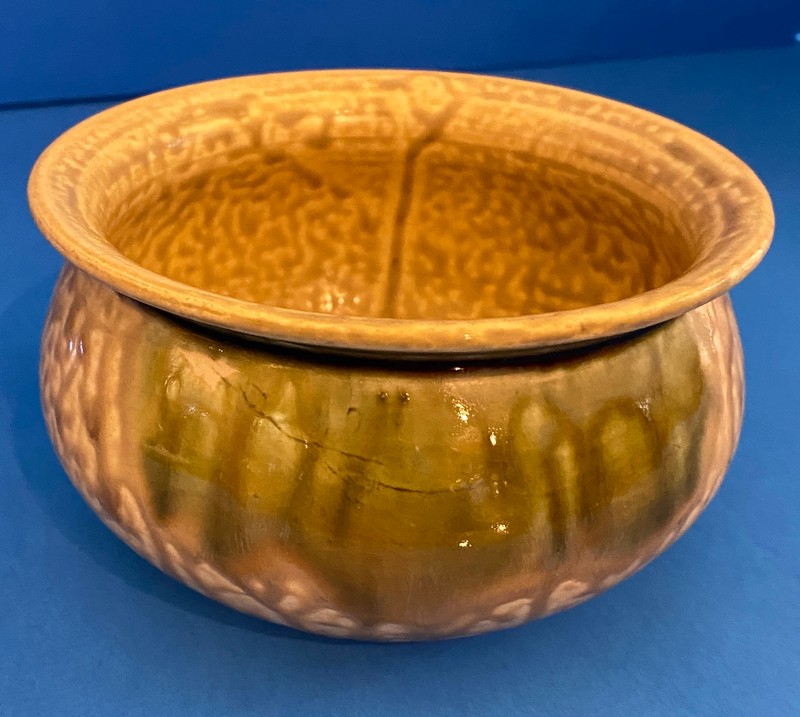
Lacquer tea container (tea caddie) to store matcha tea.
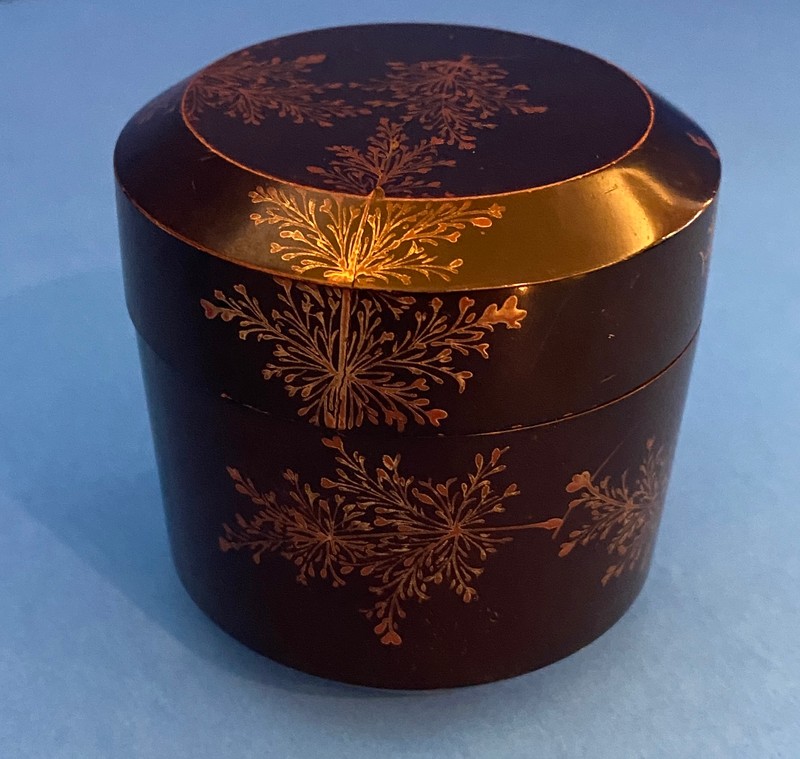
Another example of a lacquer tea container for matcha tea.
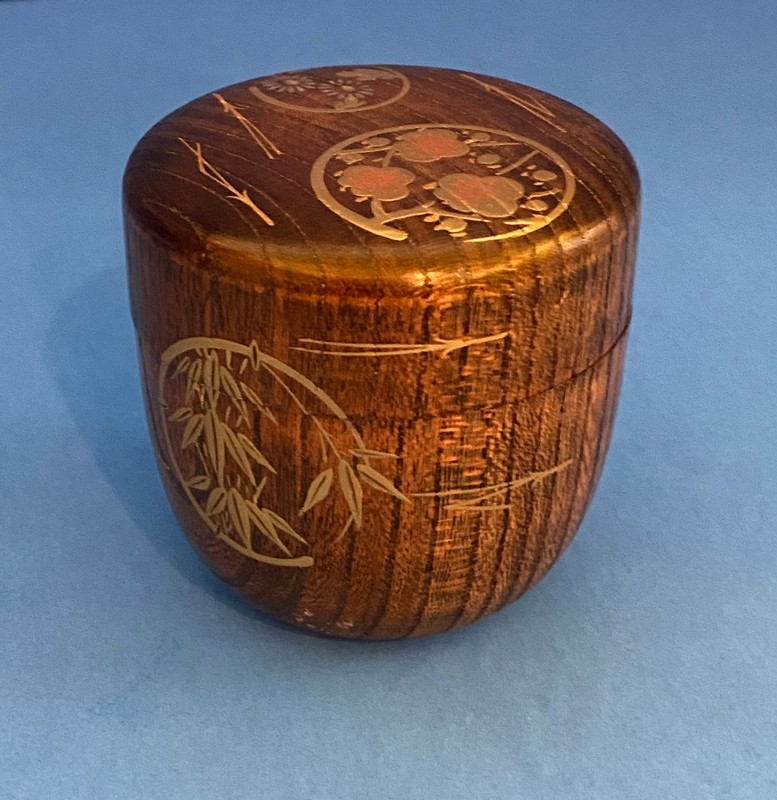
Porcelain tea caddies are used to store Koicha, or the thick tea form of matcha, used in formal tea ceremonies.
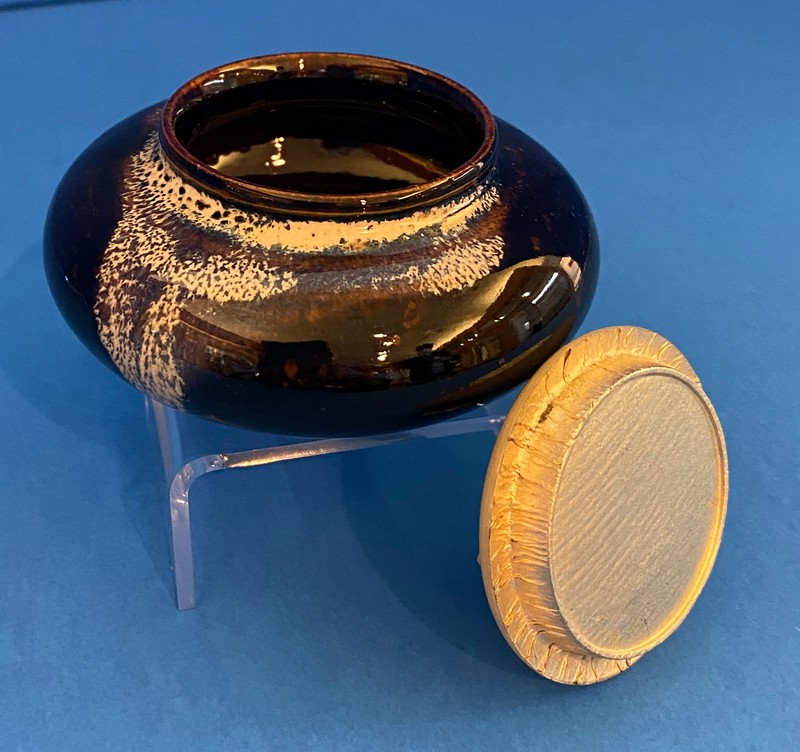
Bamboo tea scoop and powdered green matcha tea used for most informal tea ceremonies.
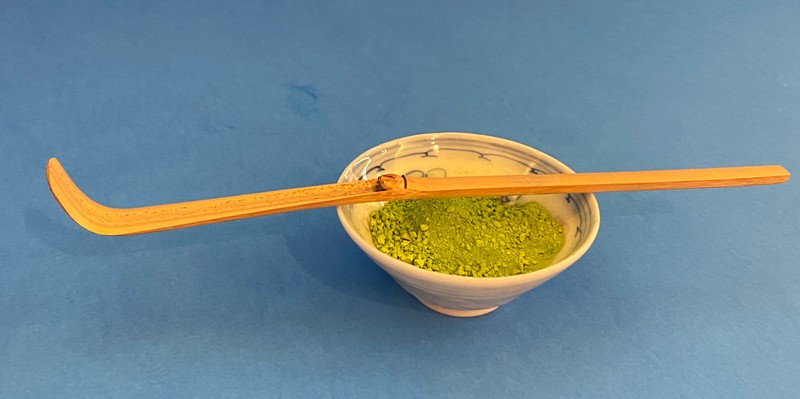
Bamboo whisk to stir the matcha tea into a foamy drink.
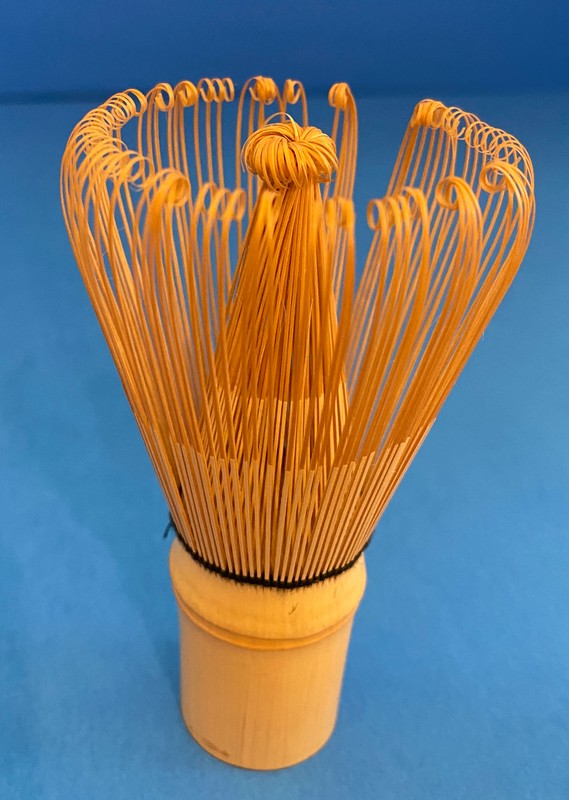
Tea bowl with plum blossom in white glaze. Signed by Kenzan probably later Edo period.
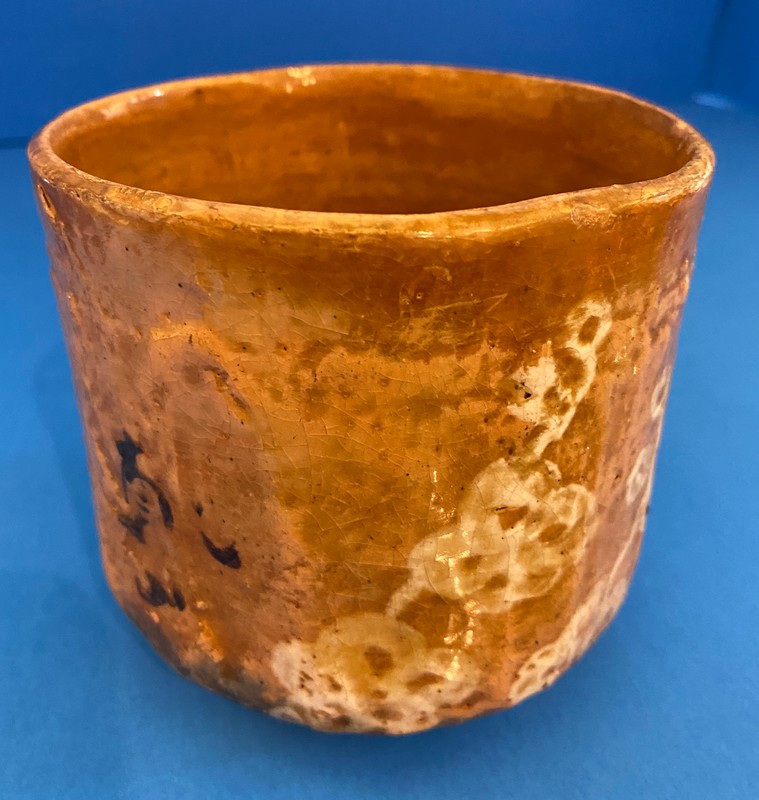
A classic example of yellow Seto ware, this bowl has an incised grass decoration on the outside.
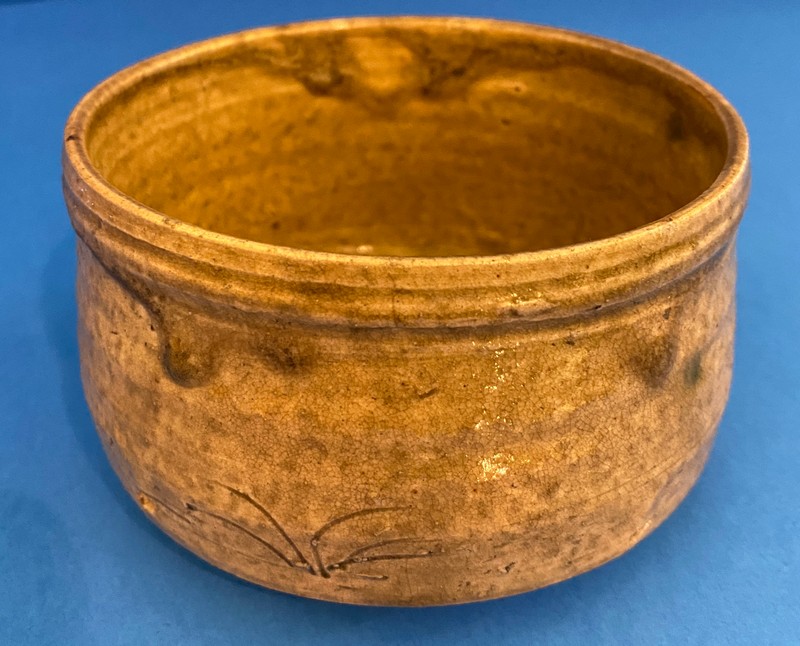
Fifteen generations of the Kichiemon Tsushio family created distinctive pottery called Minotoyaki.
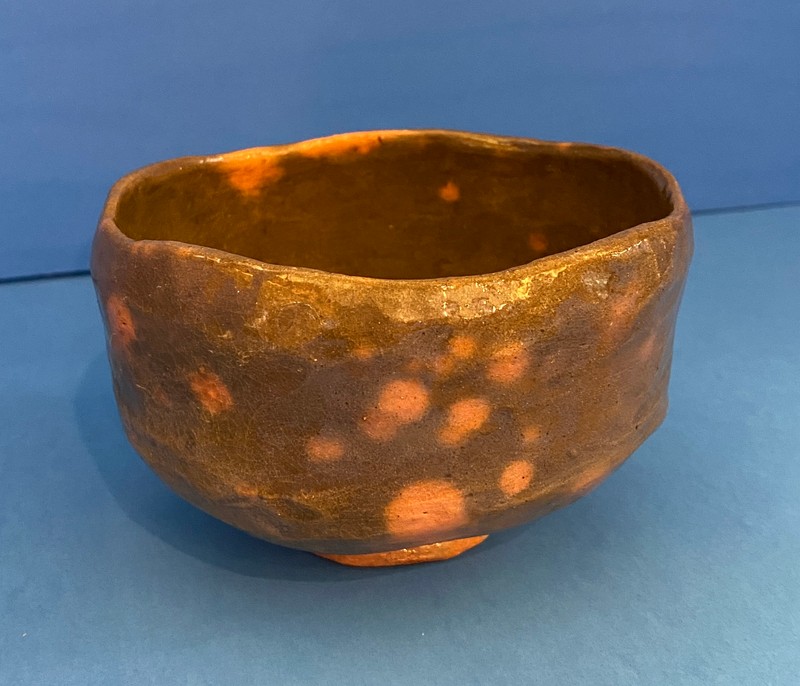
This tea bowl is decorated with crane designs in inlaid work. It is decorated with standard Hagi glaze (light brown).
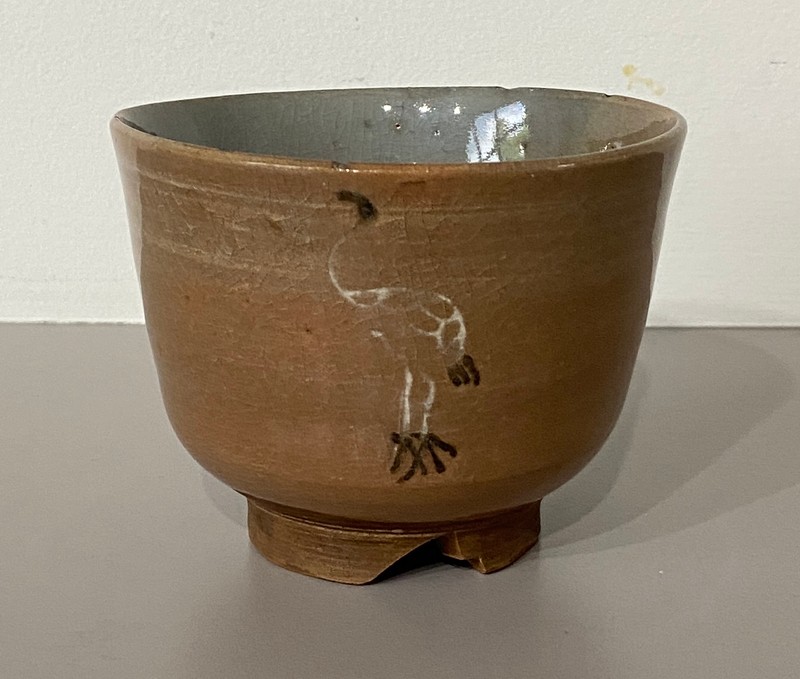
This side of the tea bowl is blue and the other side is tan. The inside has streaks of tan and blue.
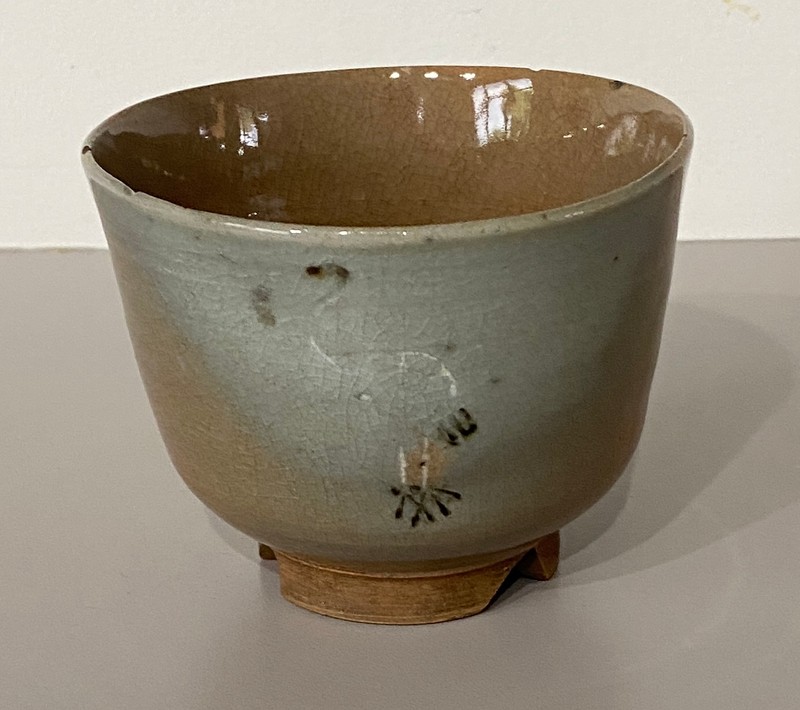
Japanese ceramic copy of Chinese Temmoku bowl, with variations in the iron glaze and spotted to resemble Hanan ware.
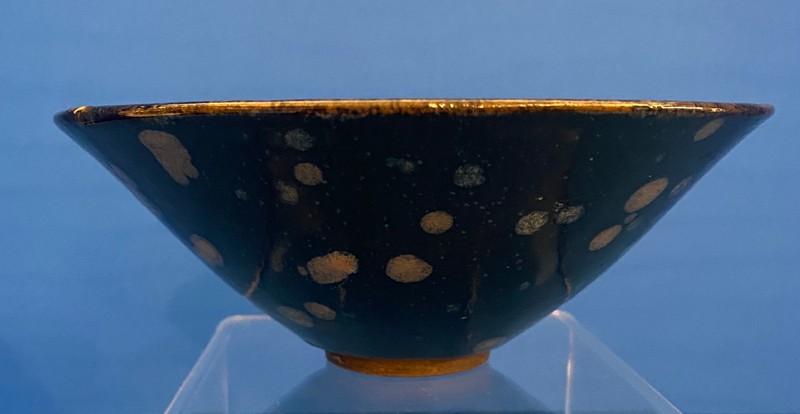
Notice the shiny gold inside this tea bowl.
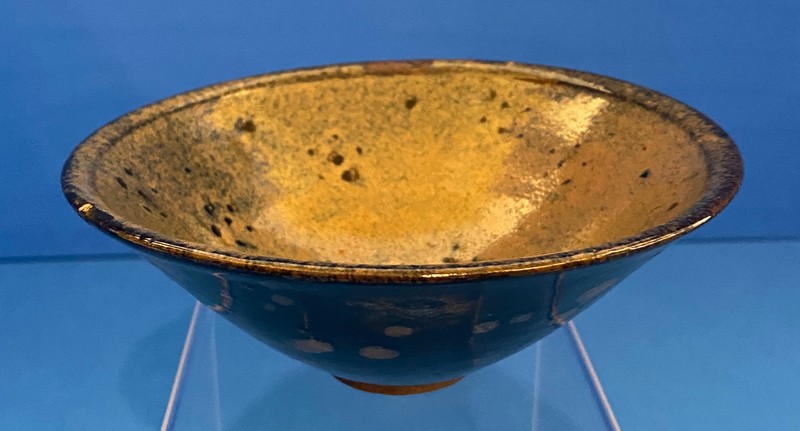
Cast iron tea kettles are used to boil water for Sencha tea.
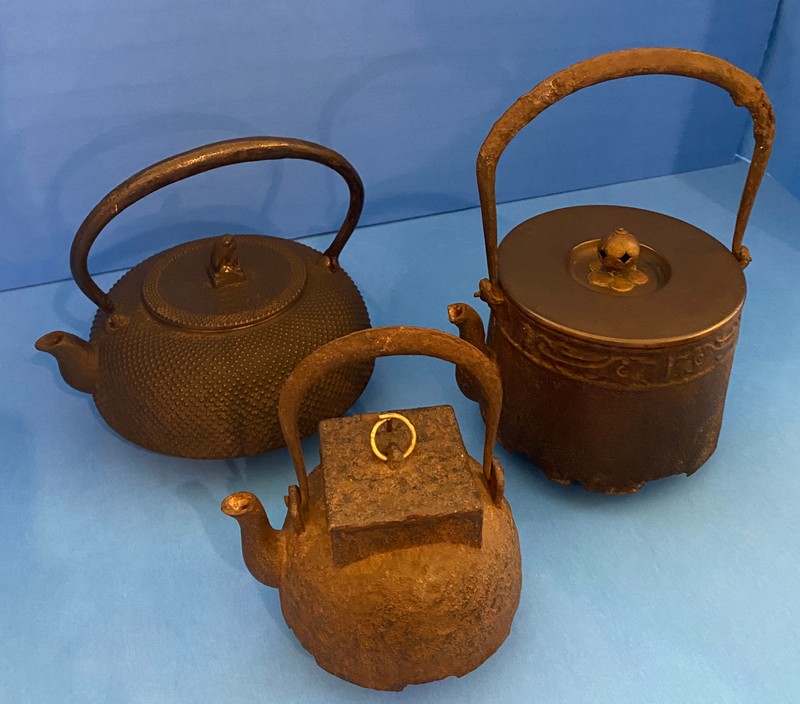
Chinese black tea is pressed into blocks for easier transportation.
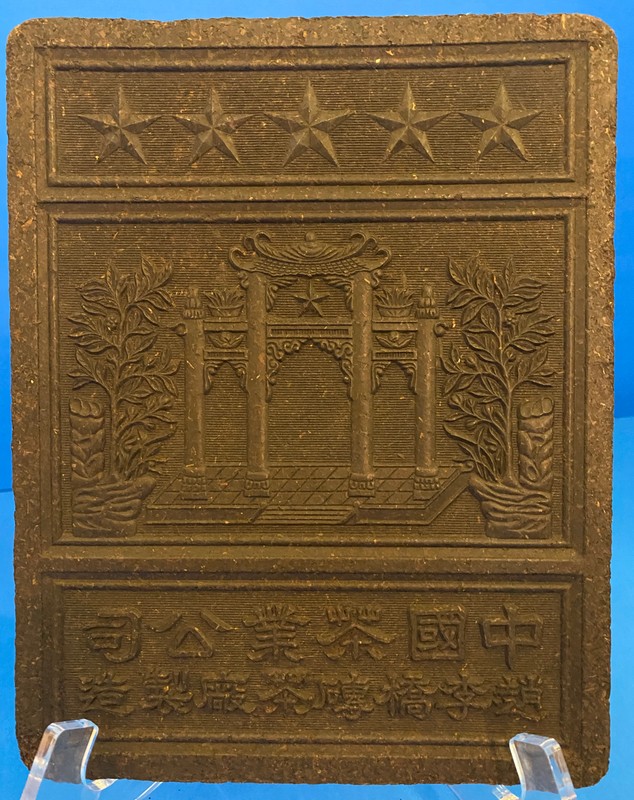
The back of the block of pressed tea shows the scoring that allows pieces to be broken off in exchange for other goods or services.
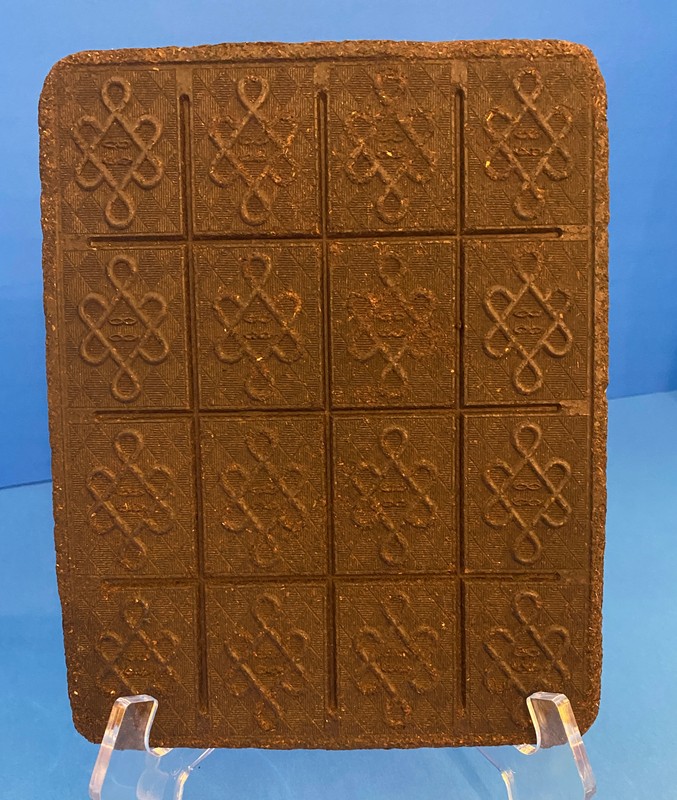
This black and gold lacquer food stand is used for kaiseki sweets to offset the bitterness of the matcha tea.
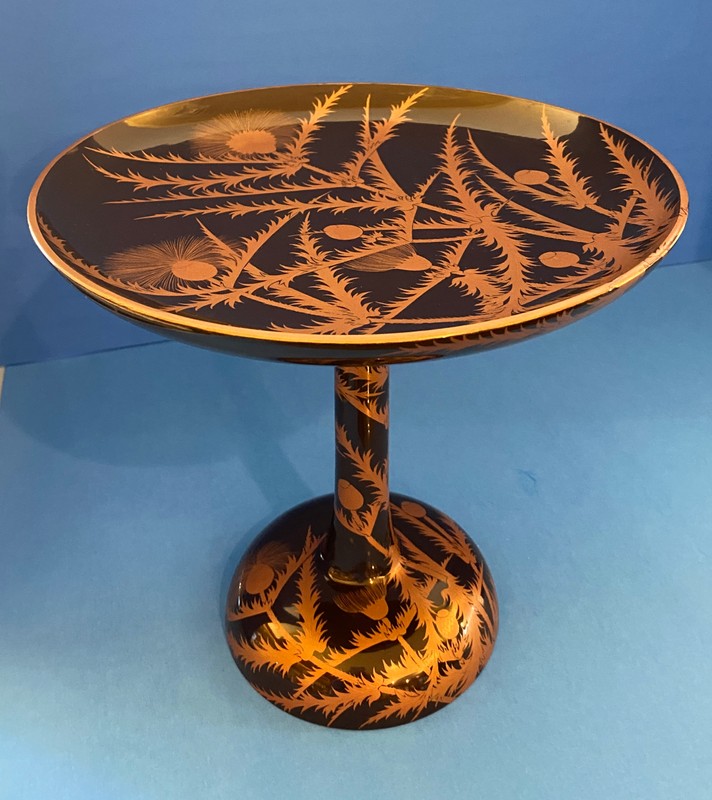
Backstory and Context
Text-to-speech Audio
Origins of the Japanese Tea Ceremony...
“Let the tea be simple and your hospitality heartfelt." Sen no Rikyu, Japanese Tea Master and Poet (1522-1591)...
With this basic philosophy, Sen no Rikyu redefined the extravagant tea ceremony of his day and established the tea ceremony still practiced today in Japan and, increasingly, worldwide. He perfected a true art form called Sado, the way of tea. Rikyu's enduring goal for a tea ceremony is for guests to become so immersed in Sado's spirit of harmony, respect, purity, and tranquility that they gain a calm perspective on a busy life...
By Rikyu's time, prosperous merchants and wealthy aristocrats had taken over the ritual tea ceremony from Zen Buddhist temples and turned it into lavish affairs. They entertained each other showing off their elegant tea implements, many specially imported from China. The extravagant tea ceremony Rikyu reacted to most strongly was an event that Toyotomi Hideyoshi, a military dictator who united Japan, hosted in 1587. He entertained 800 samurai, showing off the most expensive tea implements and offering the best possible meals. Then, to distinguish this important event, he created a tearoom covered entirely in gold...
In reaction to this extravagance, Rikyu established his own tea school. He designed a special tea garden which had water flowing into a bowl where samurai would wash their hands and symbolically purify their spirits. He created an exceptionally small tea house to stress the simplicity and intimacy of a small space. He intentionally gave it a very small door so that samurai had to duck their heads upon entering, teaching humility, and reducing the differences in rank and status. They had to leave their two swords outside, preparing them to experience tranquility. Using one tea bowl among them during a formal tea ceremony transcended social distinctions and fostered human connections. His tea school eventually became a kind of finishing school for samurai from the provinces...
Rikyu’s philosophy was that one should “treasure every encounter" and view the tea ceremony moment as being “once in a lifetime." Rikyu stressed the concepts of wabi (simplicity in daily living) and sabi (appreciation of imperfection.) From the careful movements of the host to the deliberately imperfect tea bowls, every moment of the tea ceremony reflects these ideals...
The Steps of a Tea Ceremony...
Both formal and informal tea ceremonies are practiced in Japan. A formal matcha tea ceremony can last four hours, generally starting at noon. A meal and two servings of koicha thick tea are prepared. One bowl is shared by the participants who rotate and wipe the edge of the bowl according to accepted procedure...
An informal ceremony generally lasts 45 minutes, even though the training required to conduct it is just as extensive, and one serving of the lighter usucha tea is prepared in a separate bowl for each guest...
These are the steps of an informal usucha tea ceremony:
1) The host prepares the room with seasonal flowers and implements.
2) The guests arrive through the garden and wash their hands to cleanse themselves symbolically of the outside world. They then step through a small door, exhibiting humility and respect toward the host...
3) Kneeling on his heels, the host cleans the tea implements with slow, graceful movements. He boils water in a wide-mouthed iron pot...
4) The host takes a silk cloth representing his spirit from his kimono sash, inspects it, folds and unfolds it, and uses it to handle the hot iron pot lid...
5) Matcha is spooned into a tea bowl. Several ladles of hot water are added and the usucha is whisked to a froth...
6) A prepared bowl is served to each guest who rotates the bowl to admire it, and after bowing to the host, sips the tea. The last sip is customarily taken with a loud slurp to indicate to the host that the bowl is empty, rather than breaking the spirit of the moment with words...
7) Sweets are served to complement the bitterness of the matcha tea...
8) After the guests return the bowls to the host, the tea implements are cleaned, and the ceremony ends...
Tetsubin Cast Iron Tea Kettles...
Although the three tetsubin cast iron tea kettles on display might make it seem that they are used in a traditional matcha tea ceremony, they are not. In fact, they are only used to boil water for a different style of tea, a loose-leaf green tea called sencha. The tetsubin developed its traditional shape along with the growing use of sencha. This style of tea was introduced from China in the 17th century and quickly became popular for sharing informal cups of tea with family and friends. Drinking sencha became a symbol of revolt against the ruling classes who could afford powdered matcha and Sado’s expensive tea implements. Over time it became its own tea ritual called Senchado. Both Sado and Senchado tea ceremonies can be enjoyed in Japan today...
Two poems by Rikyu...
When you take a sip
Of the water drops that fall
Into the stone bowl
You will feel that all the dust
Of your mind is washed away...
When you hear the splash
From the bowl of powder Tea
There within it lies
Clear reflected in its depths
Blue of sky and grey of sea.
Cite This Entry
STW on behalf of Assistance League of Long Beach. "Japanese Tea Ceremony." Clio: Your Guide to History. January 2, 2024. Accessed April 2, 2025. https://theclio.com/entry/171770
Sources
Ray, Michael. "Sen Rikyu, Japanese Tea Master." Britannica. February 11, 2009. Accessed September 28, 2023. https://www.britannica.com/biography/Sen-Rikyu.
Galvan, Dennis. "Tea Ceremony: Japanese Tradition." Britannica. Accessed September 28, 2023. https://www.britannica.com/tea-ceremony.
Anna. "Sencha." Global Japanese Tea Association. January 11, 2021. Accessed September 28, 2023. https://gjtea/?s=Sencha.
GJTEA. "Senchado." Global Japanese Tea Association. July 24, 2019. Accessed September 28, 2023. https://gjtea.org/senchado.
Nao-san. "Camellia: Music for a Tea Ceremony." The Kyoto Connection (YouTube). July 15, 2020. Accessed September 28, 2023. https://youtu.be/oHFwu-SFXdc?si+CjZzuxGLNrUaLal8 .
Teng, Shunan. "The History of Tea." TED-Ed Animations YouTube. May 16, 2017. Accessed September 28, 2023. https://www.youtube.com/watch?v=LaLvVc1sS20.
"Japanese Green Tea: Unbelievable Matcha Making - Dig More Japan." NHK World-Japan. August 14, 2020. Accessed September 28, 2023. https://www.youtube.com/watch?v=_zH-nfqg2Rc
"The History of Tea." UK Tea & Infusions Association. September 26, 2023. Accessed October 12, 2023. https://www.tea.co.uk/history-of-tea.
Howard Collection 25.13
Howard Collection Kettle 44.08 and Hibachi 41.18
Howard and Asian Art Study Collection
Asian Art Collection 24.54
Asian Art Collection 32.19
Asian Art Collection 32.20
Asian Art Collection 25.37
Howard and Asian Art Study Collection
Asian Art Collection 89.20
Howard Collection 24.17
Howard Collection 24.18
Howard Collection 24.51
Howard Collection 24.12
Howard Collection 24.12
Howard Collection 24.13
Howard Collection 24.13
Howard and Asian Art Collection 41.12, 44.13, 44.09
Howard and Asian Art study Collection
Howard and Asian Art Study Collection
Asian Art Collection 36.03

